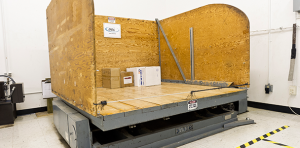 ASTM D4169-09 recently has been revised to ASTM D4169-14. ASTM D169 is the test method performed by subjecting shipping units to a test plan consisting of a sequence of hazard elements which would be encountered in various distribution environments.
ASTM D4169-09 recently has been revised to ASTM D4169-14. ASTM D169 is the test method performed by subjecting shipping units to a test plan consisting of a sequence of hazard elements which would be encountered in various distribution environments.
ASTM D4169 is the standard that has been used extensively in the medical device industry, as it is an FDA recognized consensus standard. The Distribution Cycle (DC) most commonly used for medical device packages is DC-13 which is designed for the small parcel and overnight shipping mode. Customized distribution cycles can be designed when the anticipated distribution of the product is well understood and defined.
The changes made to ASTM D4169-14 are as follows:
- Schedule G – Rail switching
-
- Four impacts instead of three shall now be performed
- Assurance Level I shall be used for open-top rail car load tests. Assurance Level II shall be used for boxcar load tests for non-hazardous materials and for TOFC/COFC load tests for non-hazardous materials. There is no Assurance Level III for this Test Schedule now.
- If known, container impact surfaces should be the same as occur in actual shipment. If the shipping orientation is not known, or if more than one orientation is possible, the first three impacts should be on that test specimen surface which is deemed to be most sensitive to damage. For the fourth impact, rotate the specimen 180° on the carriage.
- Schedule H – Environmental hazard
-
- Slight changes were made to the water temperature during spray sessions of ambient conditioning during Assurance Level I.
- Eight additional references were added.
What does this mean for medical device manufacturers? While there were several changes made to the ASTM D4169 standard, none of them will impact DC 13 testing.
Please contact us if you have any questions about these changes to ASTM D4169, or questions in general about the standard and/or your next package testing project.